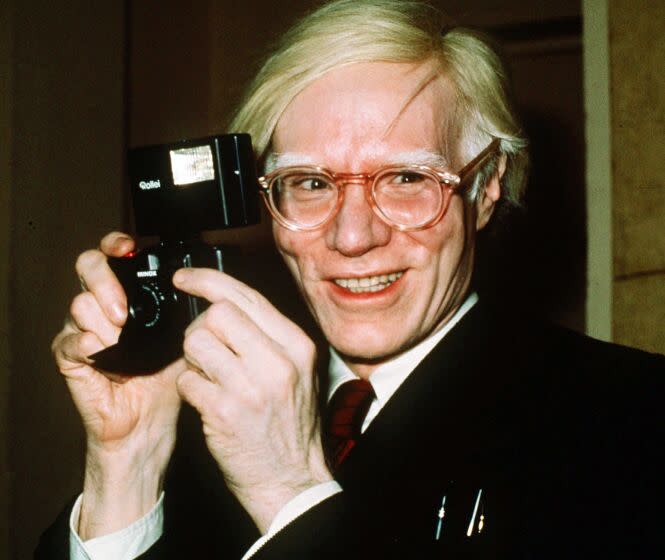Andy Warhol's estate loses at Supreme Court over his use of copyrighted photo of Prince

- Oops!Something went wrong.Please try again later.
- Oops!Something went wrong.Please try again later.
- Oops!Something went wrong.Please try again later.
- Oops!Something went wrong.Please try again later.
Andy Warhol’s posters of Prince, some shaded purple and others orange, may have been works of art, but they infringed the copyright of the photographer who captured the original image of the musician, the Supreme Court ruled Thursday.
In a 7-2 decision, the justices upheld the power of copyrights and mostly rejected the claim that artists and others may freely use original works if they transform them into something new and different.
Decades after Warhol died, the Andy Warhol Foundation continued to earn licensing fees for the use of his Prince series, while refusing to pay a fee to Lynn Goldsmith, the photographer who took the images that the artist had relied upon.
Their legal dispute was closely watched in the art and entertainment industries, which rely on both copyrighted originals and new and derivative works.
“Lynn Goldsmith’s original works, like those of other photographers, are entitled to copyright protection, even against famous artists,” Justice Sonia Sotomayor wrote in AWF vs. Goldsmith.
When considering what is “fair use” of a copyrighted work, the court has looked first to “the purpose and character of the use, including whether such use is of a commercial nature or is for nonprofit educational purposes,” she said in a 39-page decision.
Warhol’s prints and Goldsmith’s photo began as licensed works for a Vanity Fair magazine portrait of the musician, she said. Because the two works “share substantially the same purpose and the use is commercial in nature,” the Warhol Foundation had “no persuasive justification for its unauthorized use of the photograph,” she concluded.
In a concurring opinion, Justice Neil M. Gorsuch said the court was right to focus narrowly on the commercial purpose of the two works rather than on their artistic appeal or value.
“Nothing in the law requires judges to try their hand at art criticism and assess the aesthetic character of the resulting work,” he said, joined by Justice Ketanji Brown Jackson.
In a 36-page dissent, however, Justice Elena Kagan, joined by Chief Justice John G. Roberts Jr., said the majority got it wrong.
“Today, the court declares that Andy Warhol’s eye-popping silkscreen of Prince — a work based on but dramatically altering an existing photograph — is (in copyright lingo) not ‘transformative,’” she wrote.
“Warhol is a towering figure in modern art not despite but because of his use of source materials. His work — whether Soup Cans and Brillo Boxes or Marilyn and Prince — turned something not his into something all his own,” Kagan wrote. “If Warhol does not get credit for transformative copying, who will?”
Boston attorney Nicholas O’Donnell, an expert in art law, said the court’s opinion may have a limited impact because it focused on the commercial use of both works. “The court carefully avoids many of the broader questions about the limits of fair use in visual art, which is an interesting choice,” he said. “Most significantly, the court categorically rejected the idea that any new ... message qualifies as a fair use in and of itself, holding that such an exception would swallow the fair use rule.”
Los Angeles lawyer Douglas Mirell predicted the decision could have ramifications for the film industry: “This ruling could be extraordinarily problematic for documentary filmmakers and others who frequently rely upon ‘fair use’ as a defense for using clips of copyrighted works to tell the story.”
This story originally appeared in Los Angeles Times.

